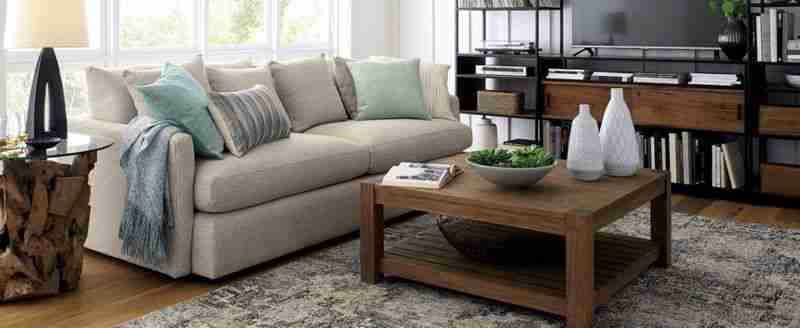How to Choose a Rug: An Area Rug Buying Guide
Posted in Angelcityfurniture
What size rug do I need?

When it comes to how to choose a living room rug (or any rug for that matter), think about proportion and scale. You want the rug to fill the space nicely without looking too crowded. Most interior designers follow a simple rule of thumb: the larger the room, the larger the rug.
What is the best way to measure a room for a rug?
Start by taking the general measurements of the space and reduce those dimensions by 1-2 feet to get an idea of the best rug size for that area. Additionally, try using painter’s tape to map out your ideal rug placement, then measure the outline’s dimensions.
Do I need a rug pad?
Is the rug going to be in contact with a hardwood floor? If so, you should definitely use a rug pad, as it provides insulation, absorbs the impact of your footsteps and minimizes slippage. A breathable rug pad is also essential—hard flooring that can’t get air has a tendency to become discolored.
How do I choose a rug pad?
It all depends on the size of your rug. A general rule of thumb is that the rug pad should be about one inch less than your rug size, on all four sides. For example, if the size of your rug is 8x10, get a rug pad in the same size and use scissors or a box cutter to trim down if needed.
How should I decide what rug color or pattern to choose?
Designers consider rugs to be like works of art for the floor. A bright color or interesting pattern is great for defining the overall look and feel of the space, especially if the furniture is all solid colors. What about rooms that already have ample color, such as a kids’ room? Go for a rug in neutral tones instead. No matter what you choose, the best rug is the one that feels right for your home.
How do I store my rug?
Before storing your rug, clean it according to its care instructions. Then, roll the rug up with the pile on the inside. Wrap it in kraft paper or a breathable, water-resistant paper—but do not wrap in plastic. Plastic can trap moisture and encourage mold growth. Make sure to keep your rug elevated to allow for air circulation. And lastly, store in a climate-controlled space.
How do I care for a wool rug?
To care for wool rugs, vacuum regularly. For the first two to three months, additional vacuuming without the beater bar turned on may be necessary to manage the normal shedding that occurs. If a little one spills a cup of juice or a pet has an accident, blot the spill immediately with a clean, absorbent white cloth. Avoid using cleaning solvents or scrubbing excessively to keep the rug’s texture intact.
How do I care for a natural fiber rug?
To care for a natural fiber rug, vacuum regularly. Immediately blot accidental spills with a clean, absorbent white cloth. For a more precise spot clean, use a dry extraction powder that removes hard-to-remove marks. Professional dry extraction cleaning services provide pristine cleans. Natural fibers are quite absorbent and can shrink and expand with changes in humidity—these are intended for indoor use only.
How do I care for a cotton rug?
Look for the machine-washable label on smaller rugs for an effortless clean. To wash larger cotton rugs, opt for industrial-sized washers or dry cleaning for a crisp finish. Avoid unwanted fading by placing a cotton rug in shaded areas of the home, avoiding direct sunlight.
How do I care for my synthetic rug?
Vacuum regularly. To clean accidental spills, immediately blot the area with a clean, absorbent white cloth. For a more thorough clean, spot clean the spill with shampoo or a mild detergent. We recommend periodic professional cleaning—these deep cleans make your synthetic rug look as good as new. If the desired use is indoors, use a rug pad to protect your floor. Indoor-outdoor rugs should be washed outside with a mild detergent and rinsed off with a garden hose.